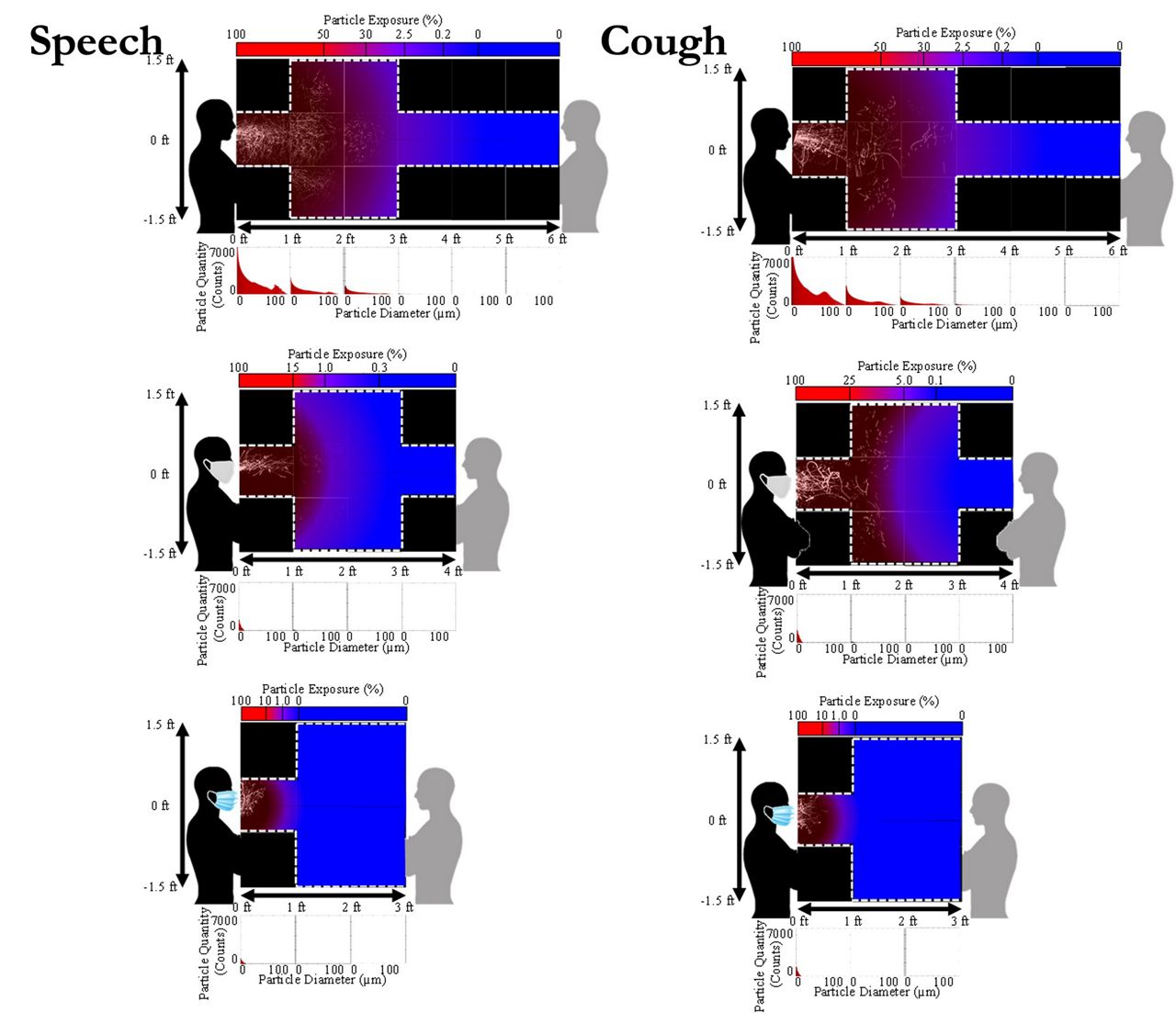As the Centers for Disease Control and Prevention considers advising higher quality masks for Americans, researchers at the University of Central Florida did their own work that further proves their effectiveness.
They also sought to clarify what social distancing would be required based on good data.
What You Need To Know
- UCF researchers published the study in the Journal of Infectious Diseases
- The paper found that social distancing isn’t required while wearing a respirator-type mask, like a KN95
- Surgical masks are also highly effective, when fitted correctly
They published their findings this week in the Journal of Infectious Diseases. The team concluded that face masks reduced the distance that particles and aerosols expelled by talking and coughing traveled by more than 50% compared to not wearing a mask.
“One safe measure you can always take, and you should be taking is wearing a mask," said the study's co-author said Bernhard Stieh. "And as I was saying, we’ve not only measured a significant reduction in the distance, but an even more significant reduction in the emitted droplet as well as aerosol count.
“Especially the count went down by a huge number and that would be associated with a high reduction of the transmission risk.”
Stiehl and his colleagues were inspired to go down this research path after noting that there were quite a few similarities between this type of research with their primary focus: propulsion.
“We essentially tried to see the whole thing that has been thought and over-thought and over-measured by a lot of people in this world from a totally different perspective," Stiehl said. "And we’re just trying to do that with fresh eyes."
The study involved 14 people made up of 11 men and three women aged 21 to 31. They would each cough and repeated a phrase for five minutes and did so under three different conditions: without a face-covering, with a single-layer cloth mask and triple-layer disposable surgical-style mask.

The chosen phrase was “The quick brown fox jumps over the lazy dog into a field of pretty perpetually purple pandas.” That type of sentence is known as a pangram, which is something that contains every letter of the alphabet.
“(It) specifically contains a lot of P’s and consonants, which is known to be connected to a lot of droplet and aerosol emissions,” Stiehl said.
What they found was that without a face covering, “a high concentration of aerosols/droplets is visible up to 4.1 feet downstream” for speaking and up to 4.5 feet with coughing.
Wearing a cloth mask reduced that distance to about 2 feet for speaking and coughing. A surgical mask dropped that to about half a foot and a respirator-type mask, like an N95, would essentially eliminate the need for social distancing.
“We all really want to try and beat the pandemic and be able to enjoy not social distancing as soon as we can again,” Stiehl said. “I think the key takeaway here is use a high-quality mask. It doesn’t have to be the KN95 respirator, but it should at least be a surgical mask, a disposable mask type that can reduce safe social distance to one foot.”
He pointed out that fit was also extremely important. Stiehl said that cloth masks can leave spaces around your nose and chin that allow aerosols to slip through more easily than a surgical mask with the wiring along the nose.
The data was collected with two optical instruments and one aerodynamic particle sizer. Stiehl said another benefit of this study was proving that you don’t need a medical background to have an impact on ending this pandemic.
“It doesn’t have to be a rapid test — it doesn’t have to be a PCR test," he said. "It could literally be as simple as using and applying engineering principles that we’ve been using for a lot of other disciplines, like jet propulsion research and directly applying them to COVID research.”




